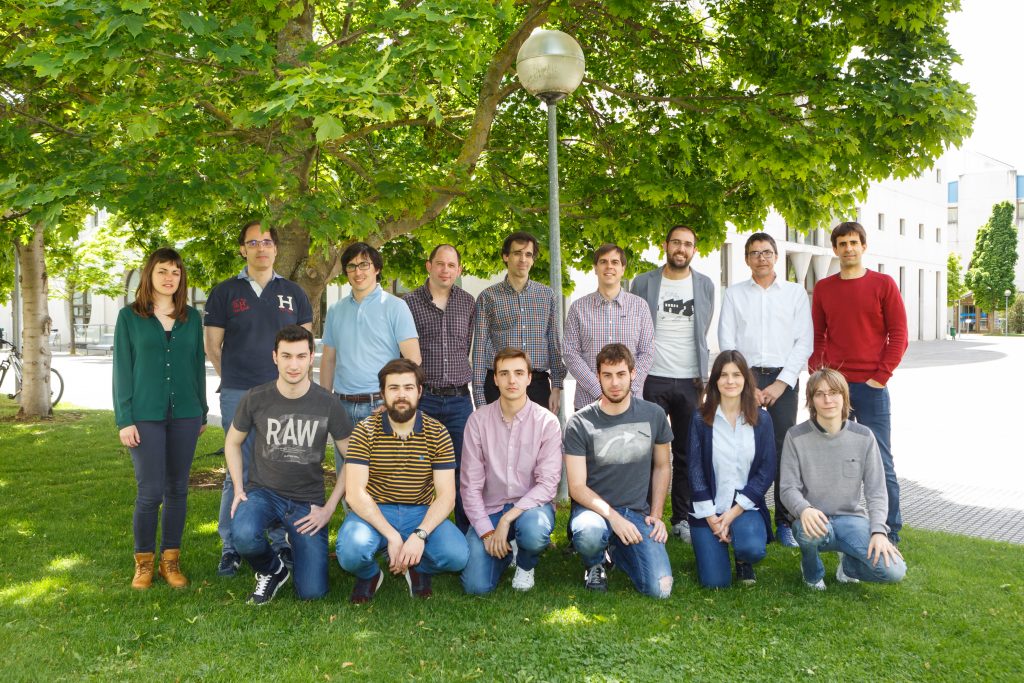In December, we announced the winners of our CST University Publication Award. Every year, we select three papers and one short paper to honor and we are excited to share some of the details behind the winning research. We spoke to Dr. Miguel Laso to learn more about his team’s award winning paper, “Chirping Techniques to Maximize the Power-Handling Capability of Harmonic Waveguide Low-Pass Filters.”
What is the challenge that this new filter method addresses?
The filter in this paper is the result of a multi-year collaboration between TESAT Spacecom GmbH and the Microwave Components Group at UPNA in the framework of several contracts and ESA projects. TESAT and UPNA have successfully developed a new standard of output lowpass filter for the communications satellite payload, which withstands the combined power of all the satellite channels and cleans all the channel signals at the same time from spurious responses. This avoids the use of many individual low-pass filters, one per channel, as it is usually done now. In this paper, we surpassed our previous results, getting a filter to handle more than 100 kW, while the equivalent classical waffle-iron filter handles only 0.15 kW (!!!) before the multipactor effect appears and ruins communication.
How does this chirping technique help engineers improve their filter designs?
Currently, although very good high-power analysis tools such as SPARK3D or CST PARTICLE STUDIO® exist, the space industry usually conducts also a costly testing campaign of the satellite parts before they are launched into space to check that everything works fine. The European Cooperation for Space Standardization (ECSS) – Multipaction design and test- is the document that the industry uses to conduct such testing campaigns. Getting such high-power handling capability, such as 100 kW in an analysis, theoretically avoids the use of this “just-in-case” testing to check whether the filter will withstand the conditions in a real working situation in space. This saves a lot of time and budget. According to the current ECSS document, the filter in the paper should handle at least 70 kW in simulation for testing to be considered unnecessary. We easily get more than 100 kW.
How did you use FEST3D in your research project?
FEST3D is the ideal tool to simulate such kind of devices based on the concatenation of waveguide sections, and we can obtain the S-parameters of the filter very quickly and reliably. FEST3D also allows us to optimize the device very easily. Finally, FEST3D is also used to check the filter behavior for multimode excitation.
How did you use CST STUDIO SUITE®?
In the paper, CST MICROWAVE STUDIO® (CST MWS), part of CST STUDIO SUITE®, is used to see the fields inside the filter. This allows us to adjust several of the most important filter parameters, such as the minimum mechanical gap, the waveguide length between the filter elements, and the length of the elements themselves, to maximize the filter power-handling capability. The power-handling was checked with SPARK3D, where we used the fields previously calculated. We also make use of CST MWS to include in the design phenomena such as the milling rounding, wall tilting, and several other imperfections that we have in the real world when the part is milled at the workshop. CST STUDIO SUITE® has also been used by our research group to simulate the frequency response of passive devices with unconventional non-step-shaped profiles, such as smooth or continuous profiles, a flagship of our research outcomes and papers for many years.

More generally, has the CST academic license and the CST University Publication Award helped your team?
A lot, not only to simulate the sometimes “strange” devices that we imagine or which result from our design techniques but also to train our younger undergraduate students in class or at the doctoral level in the design of satellite components. The CST University Publication Award confirms that we are taking full advantage of the CST tools and it is an incentive for us to continue exploring their possibilities.
What’s next for you – are you working on this technique further?
We have been working on this idea for years and have applied it to several scenarios. We recently successfully closed an ESA project on its use for future Ka-band multibeam payloads. Although the improvement of a novel concept is endless, we believe that the idea is already very mature and it is being used by TESAT, which is also the current owner of the patent. More generally, we will continue working on microwave filters and passive devices in the future, particularly for space applications. As an example of our current interests, we are currently working hard on a new design method for bandpass filters for the future high-capacity Q/V/W –bands and above (this is a Ph.D. thesis co-funded by ESA). We have already reported very good results in combining excellent frequency behavior, power-handling, and fabrication easiness, the latter using the same milling tolerances employed at the workshop for lower (Ku/Ka) frequency bands.
Is there anything else you would like to mention?
We thank the CST family for their support. We believe we were one of your first clients in Europe many years ago and you have been a part of many of our research papers ever since. We feel honoured that you have considered our work as an outstanding good practice example for the community.
The team that authored this paper at the University of Navarra consisted of Fernando Teberio, Ivan Arregui, Adrian Gomez-Torrent, Israel Arnedo, Magdalena Chudzik, Michael Zedler, Franz-Josef Görtz, Rolf Jost, Txema Lopetegi, and Miguel A. G. Laso.

